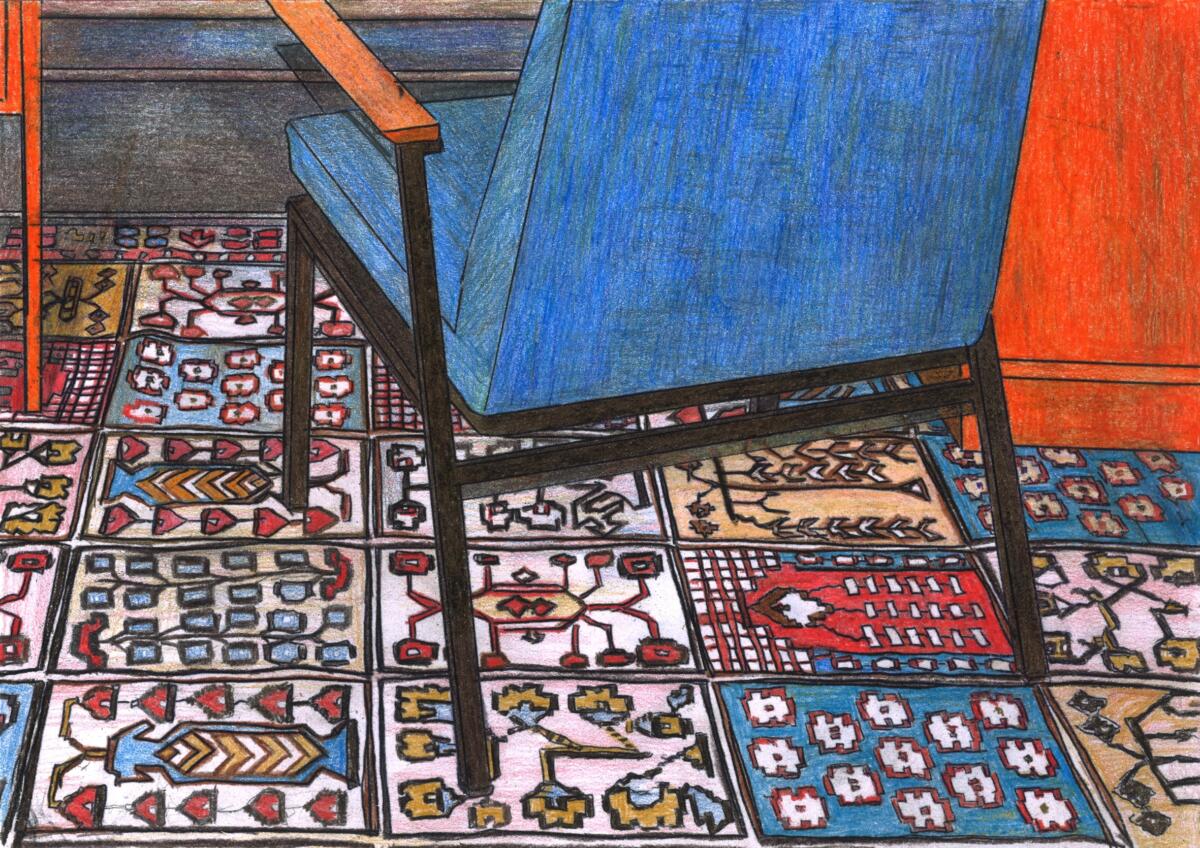
Joanna Sokołowska: Let`s start with the core of your work – your engagement with architecture and design. How did your interest, particularly in socialist and utopian architecture, originate?
Andrea Pichl: I think it all began with an experience in 2005 when I designed the exhibition architecture for “Too Much Future – Punk in der DDR”. I used GDR architectural design and details for the display. And then in 2008, during my residency in Paris, I explored the city peripheries daily and stumbled upon modern, social housing similar to where I grew up in East Berlin.
What intrigues you about the legacy of modern social housing?
Well, I assessed it later with more travels and working on specific commissions. Take, for example, my recent work for Kunsthalle Rostock. Kunsthalle Rostock is the most important and only new museum building in the GDR and is an important testimony to GDR modernism. While working on site, I had to find a solution, how to deal with the specific materials and architecture.
And you came up with a kind of kiosk, for which you used leftovers from the construction.
Exactly. The kiosk is modelled on a GDR newspaper kiosk, which is also a testimony to GDR modernism. These have almost disappeared from the cityscape of the former GDR. I used metal parts discarded by the recent renovation of the building, such as window grilles, depot grilles and doors. The work functioned as a sculpture and a reminder of the erased heritage.

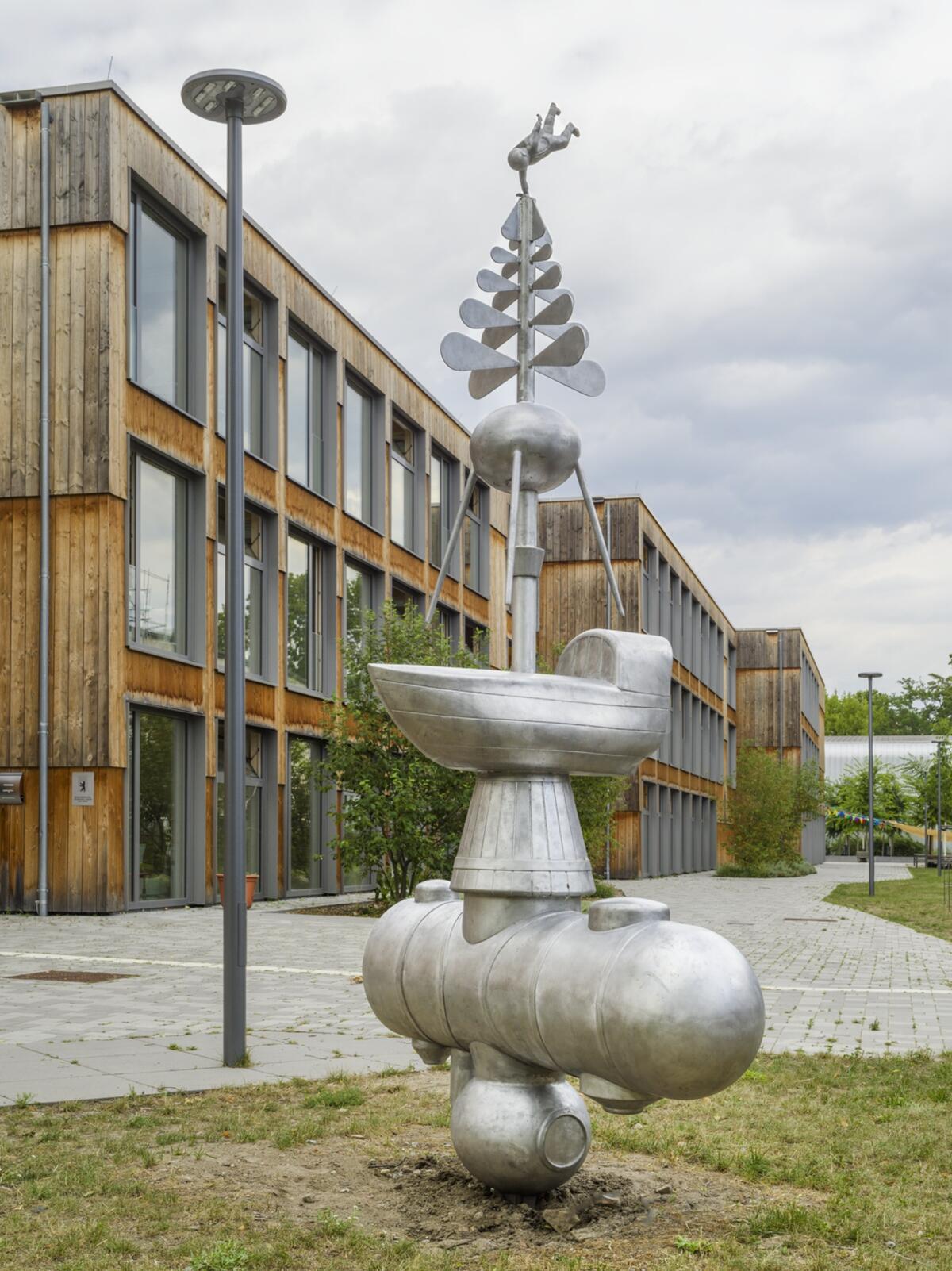
Could you tell me more about how you reinterpret standard features of soc-modernist design? Do you try to extract a recurring pattern, the essence of a certain aesthetics and a socio-political project encoded in these ground floors or specific materials and details?
When I had a residency in Dulin at the Irish Museum of Modern Art, and in New York at the International Studio & Curatorial Program, I visited archives seeking out architectural plans of social housing estates. I wanted to find out how social housing in capitalist countries has changed over time. And I found out that they look a lot like the prefabricated building I grew up in. I found out that these measurements and layouts are similar all over the world ins certain type of mass housing. I often transform existing ground plans into something abstract, I realized that this is something I do unconsciously.
On the other hand, your work not only explores the history and ideology of socialist or modernist architecture but also its current situation and how people adapt it to their individual needs, even if the space for their own expression is very limited.
Yes, I like to explore transformations of these buildings and in particular the way they are customized. For example, the starting point for my project in 2022 at the Schwartzsche Villa in Berlin was my research into „Behelfsheime“. These were very small homes, free-standing on a plot of land, built during WWI according to strict rules. Gradually, in the postwar world, these design standards started being abandoned in favour of individual ones. My installation at the Schwartzsche Villa draws on these private, improvised ways of transforming and inhabiting given and designed spaces. I delved into the contemporary landscape of private design, drawing inspiration from the design choices of residents in makeshift homes across Wilhelmshaven, East and West Berlin. Within the walls of the Schwartzsche Villa, my installation transformed the often spontaneous and anarchic design of these homes into a distinctive artistic and immersive space. I tried to capture the essence of these dwellings through printed cloths, using my own photographs that document my observations of these homes and images from a collection dedicated to such homes. I weaved a narrative that goes beyond visual representation. Additionally, my installation integrated a carpet featuring the floor plan of a „Behelfsheime” and prefabricated concrete slab doors, offering a tangible connection between individualized living spaces and standardized housing concepts.
Let’s talk about the politics behind the design. One of your most overtly political works was “Wessen Morgen ist der Morgen? Wessen Welt ist die Welt?”[Whose tomorrow is the tomorrow? Whose world is the world?] (2023), which deals with dispossession and selling off state property in the GDR after 1990.
I borrowed the title from Bertold Brecht`s “Solidaritätslied.” I grew up with this song. In 2023 I was invited for a project at Uferhallen in Berlin. This is a huge area with post industrial buildings that are home to many artist studios. At this time artists were threatened with expulsion. For my project, I created an installation in a public space at Ufferhallen, featuring printed GDR buildings, uncovering their history. Buildings of such scale, like Sports and Recreation Centre, would be sold for €1 to an investor who just abandoned them so that they would be demolished. And this the story of selling for a symbolic fee, abandoning, and then demolition, which happened all over the GDR.

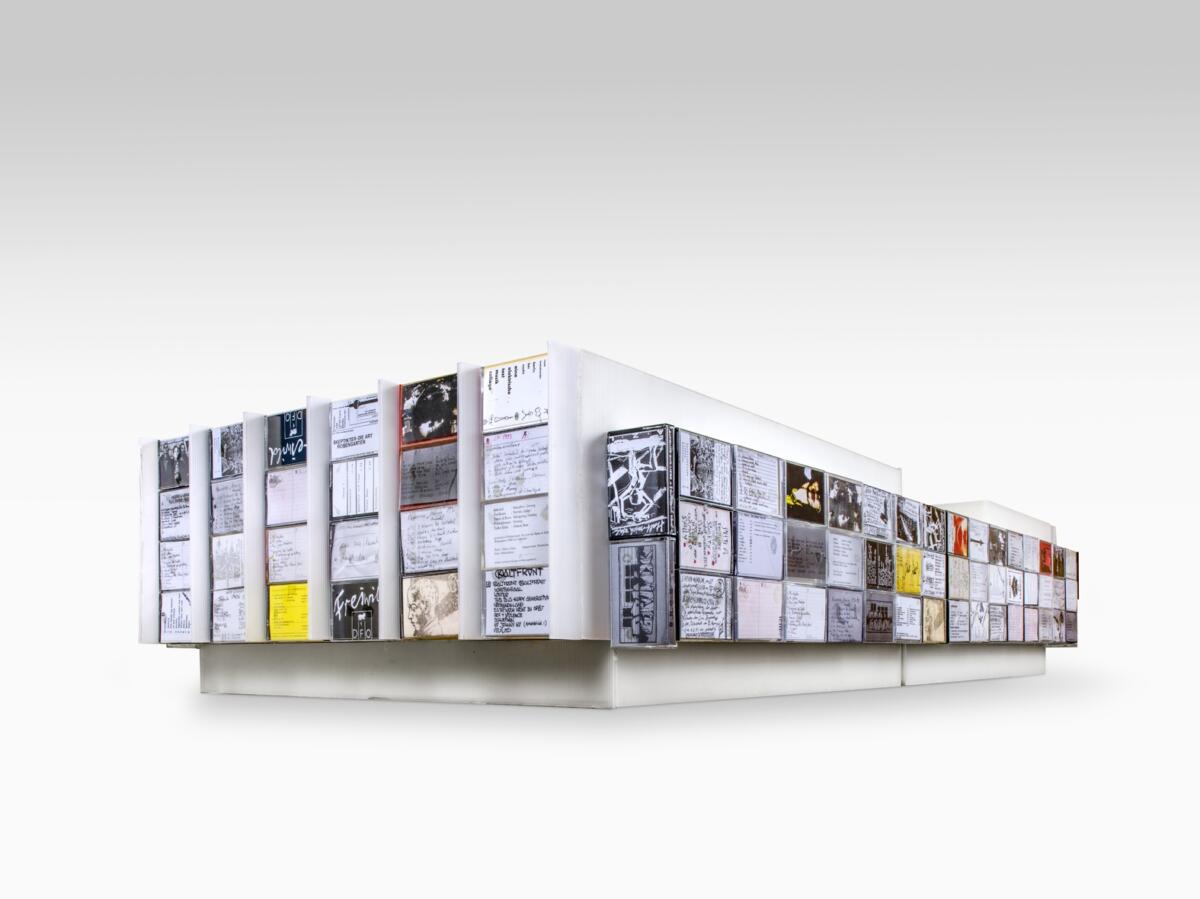
Your intervention seems to be a form of memory work resisting the erasing and forgetting of the past. At the same time I really appreciate that you don’t practice ostalgy. You seem so focused on the GDR period but are not sentimental about it, you confront also dark aspects of this state. I’m intrigued in particular by your series of drawings, “Stasizentrale Nr.1-30” (2020-2021), depicting Stasi (the Ministry for State Security) interiors from partial, fragmented perspectives. Can you share more about this project?
I went there for the first time in my life in 2018. I was affected by the State in the past, I couldn’t even study until the wall came down. When I entered the Stasi building I shot the interiors with my camera but decided finally to make drawings on the basis of the photos. They reflect my personal view on the political nature of this very mundane design. I wanted to touch what Hannah Arendt describes as the “the banality of evil”; to find this in an ugly kitchen, a plant in the corner of a room, a carpet; in the typical, everyday objects which many people had in this time.
This work is so uncanny. You look at things that seem to be so innocent but you know that this living environment was anything but. And the fact that so many people lived among such things makes you think about complicity, that it is much larger.
It is.
But you allow us only to see the fragments.
This is always my strategy. I show only fragments to make people think about themselves. I don’t want to be didactic and tell the viewer everything.
Your approach aligns with Walter Benjamin’s lesson of materialist history; you don`t work with the illusion of any historical entity but confront the viewers with disturbing fragments, leaving us with the task of connecting them in our own imagination, to make sense out of it from what we bring to it. Is this space that you create for the viewer intentional?
Yes. I don’t want to teach anybody.
This way you give space for evolving complex, ambiguous emotions and reflections, which are not simply based on the judgement of the other. This is also the case of one of your most eerie works, “TSC” (2019), installed in the Berliner Turn- und Sportklub, a former Stasi gym. It consists of DIY fences, mostly made from “industrial scrap” due to the economic constraints of the GDR and prints depicting Stasi employees during sports. So instead of beasts in uniforms, in these archival photos we encounter the ghostly presence of ordinary people as they worked out or did yoga exercises surrounded by popular domestic design elements such as fences and curtains. Again, the evil seems to be dispersed through out everyday life and not something specific that we can really point to.
Again, I wanted people to think about it for themselves.
Your investment in the GDR past has recently expanded to curatorial work. The exhibition “Worin unsere Stärke besteht” (“Where Our Strength Lies”), prepared by you in 2022 for Kunstraum Kreuzberg, showed work of women artists who were born in the GDR. What was your motivation to dedicate your work to other artists?
Frustration with the underrepresentation of artists with GDR backgrounds in official museums and major art centers in Germany. I was also angry about the big gender disparity, where successful artists from the East were predominantly men. So, I decided to curate an exhibition featuring fifty female artists from three different generations, all born in the GDR.
Your curatorial work is, in a sense, an act of resistance and cultural activism. Can you tell me how you displayed and connected the artworks in the exhibition?
The works from the GDR period look almost contemporary. I mixed artworks from different generations and periods without labels containing dates and explanations.
Why did you decide to show them without any additional meditation?
I didn’t want to interpret anything for the viewers, but instead make them just look at the works.
Did they follow it?
I think it was successful, we got a lot of feedback, 20 reviews.


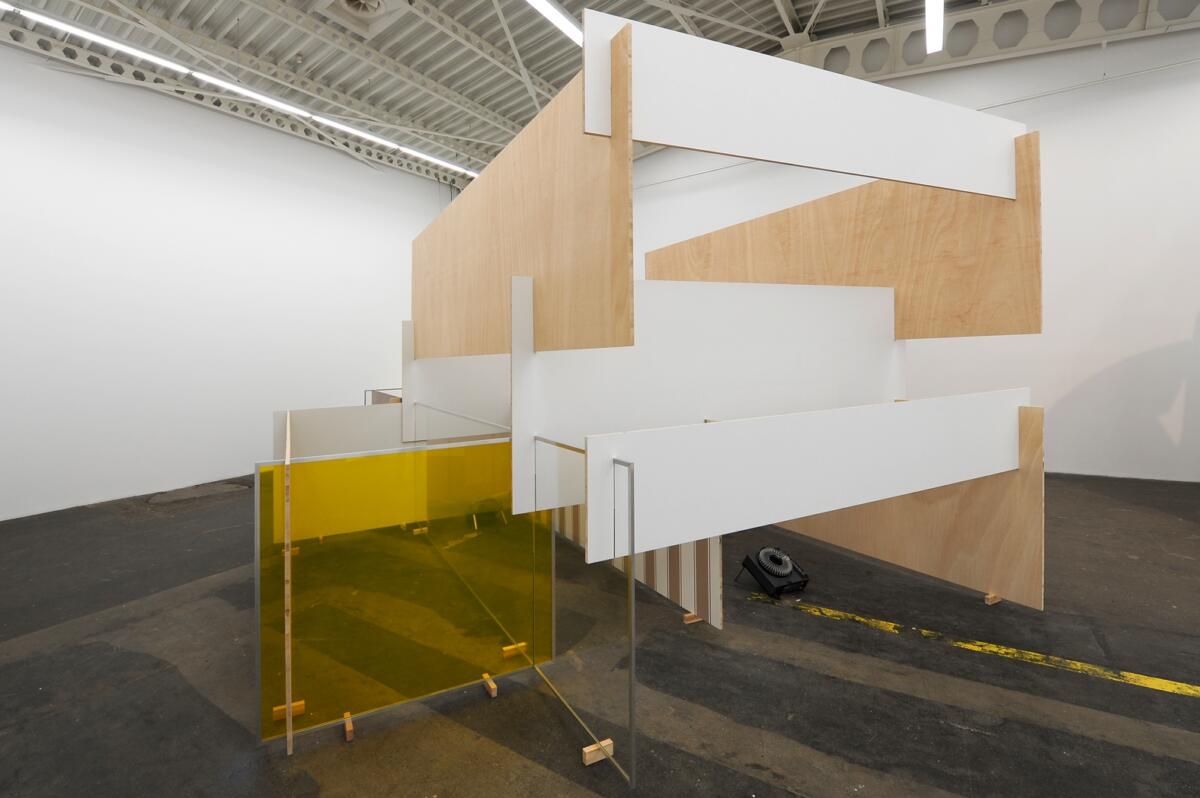
Let’s talk about your residency in Krzyżowa. You`re here not for the first time.
I was initially invited here 25 years ago for an artwork competition during the inauguration of this place. I revisited the history through reading books on the Kreisau Circle and Helmuth James von Moltke’s letters to Freya von Moltke. Simultaneously, I explored current reality. And then I did the same as I always do when I’m in a foreign country and only have a few weeks to spend there: I go around, have a look and take photos. I selected about 300 images out of the 500 that I took here. They are research for a work that I am considering making in the future.
What was the focus of the photography series you took here?
I took mostly photographs of houses, fences, predominantly private architecture in the area of Krzyżowa. I was reminded here of my own childhood during GDR times. I really liked the improvised way people create their living spaces, how they design their own world by themselves and not in a perfect, closed manner. Following the little architectural details I can see traces of human beings.
Probably it’s the most comprehensive photo documentation of private architecture in this region. How do you want to work to connect your images of the village houses in contemporary Poland with the post-German heritage and von Moltke`s memories?
Well, it is fascinating to see different layers of history in one area. Freya von Moltke often made detailed descriptions of their estate and the surroundings. I`m thinking of making a photo film connecting the images I took here with quotes from von Moltke`s letters. But I am still collecting materials, I don’t know what will come out of all this.
Let’s talk about the workshop you prepared for the youth participating in the exchange programs, which is a core mission of the Krzyżowa Foundation. Apart from the individual work, the residency also entails cooperation with young people who visit us and with the foundation`s educators. Could you share your experiences in this matter?
The focus of the full-day workshop titled “Everyone builds their own reality” was spatial situations and the possibilities of influencing them. A group of 20 participants explored the village and the premises of the foundation, selected an interesting or disturbing place or object. I asked them to look at every detail, to be attentive to the sounds and light and everything around. Next, they took photos and they discussed their findings, drew the object, and then finally intervened to change the spatial situation positively or in any other desirable way. We concluded the workshop with a discussion. In this workshop, which I have done with many different groups, I noted again that awareness is something universal if you just pay attention to it.
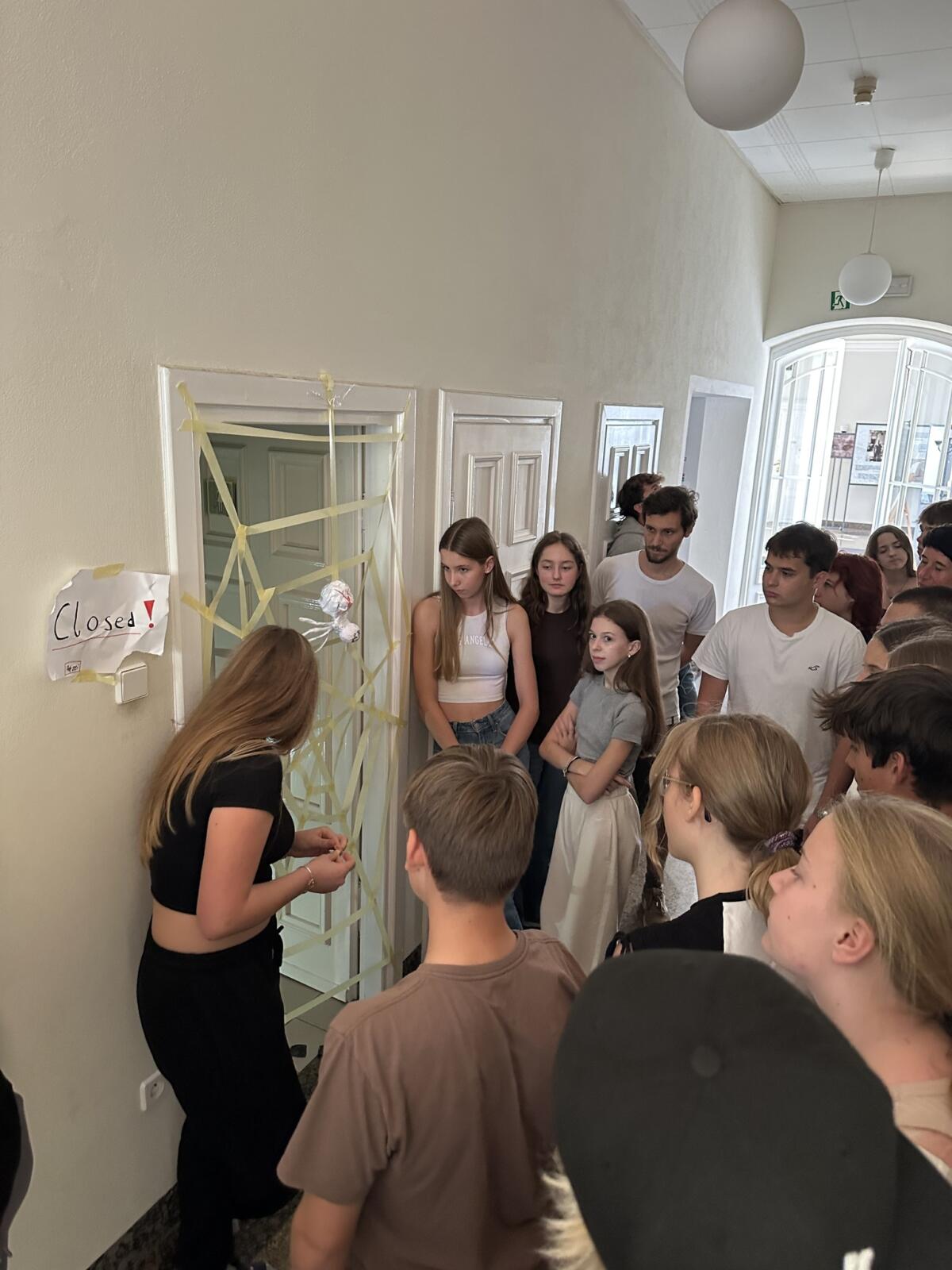

About the Konrad and Paweł Jarodzki International Artists-in-Residence Programme.
Imprint
| Artist | Andrea Pichl |
| Place / venue | The international Konrad and Paweł Jarodzki artist-in-residence programme at the Krzyżowa Foundation for Mutual Understanding in Europe |
| Dates | 2023 |
| Index | Andrea Pichl Joanna Sokołowska Konrad Jarodzki Krzyżowa Foundation for Mutual Understanding in Europe Paweł Jarodzki The Konrad and Paweł Jarodzki International Artists-in-Residence Programme |

